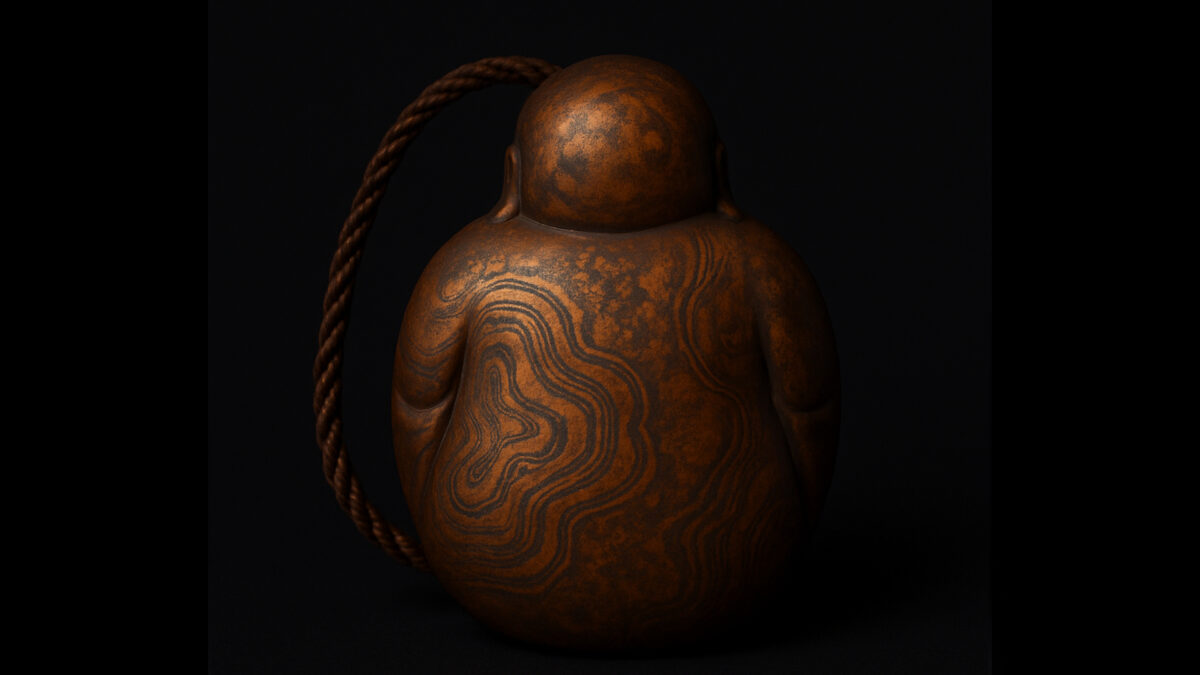- Legendary Artisans of Mokume-Gane: Crafting the Legacy
- 1. Introduction
- 2. Denbei Shoami – The Legendary Founder
- 3. The Gotō School – Foundational Figures in Metal Arts
- 4. The Manabe Tsuba School – Technical Mastery in Execution
- 5. Anonymous Artisans from Late Edo to Meiji
- 6. Contemporary Masters: Bridging Tradition and Art
- 7. Conclusion: Memory Etched in Metal Grain
- 8. Notes on Uncertainties
- 9. References
Legendary Artisans of Mokume-Gane: Crafting the Legacy
Table of Contents
- Introduction
- Denbei Shoami – The Legendary Founder
- The Gotō School – Foundations of Mokume Tradition
- The Manabe Tsuba School – Technical Brilliance in Practice
- Anonymous Artisans of the Late Edo to Meiji Period
- Contemporary Masters: Bridging Tradition and Art
- Conclusion
- Notes on Uncertainties
- References
1. Introduction
Mokume-gane is a uniquely Japanese metalworking technique in which layers of different metals are bonded and carved to create wood grain-like patterns. This beautiful craft owes its development and preservation to the skills and aesthetics of many exceptional artisans.
Based on literature, surviving works, and oral tradition, this article introduces legendary craftsmen who shaped Mokume-gane’s history. Some details remain unconfirmed due to limited documentation.
2. Denbei Shoami – The Legendary Founder
Overview
An early Edo-period sword fittings maker (1651–1728), real name Suzuki Shigeyoshi. Widely regarded as the originator of the Mokume-gane technique—though alternative theories exist.
Contributions
- Developed techniques for layering gold, silver, and copper to create patterns for sword guards and kozuka (small knife handles)
- Credited with establishing the standard Mokume process: layering → heating → carving → coloring
- The exact origins remain debated; some sources remain unverified
Sources
- “Techniques of Chokin and Tankin I & II,” Metal Artists Association
- Referenced in sword fitting appraisal literature
Note
It is possible that the technique was invented by an anonymous artisan (unverified).
3. The Gotō School – Foundational Figures in Metal Arts
Overview
A prominent family of metal artisans active from the late Muromachi through the Edo period. The Kaga and Kyoto branches created sword fittings incorporating Mokume-gane.
Characteristics
- Though best known for inlay and engraving, some Gotō school works feature Mokume patterns
- The Kaga branch combined spiral or natural motifs with Mokume, gaining acclaim
- Patterns appear on tsuba (guards), kōgai (hairpins), and fuchi-kashira (pommel-cap sets)
Sources
- Kaga Domain Crafts Museum
- “Gotō Family Sword Fittings Catalog” (National Museum of Japanese History)
Note
The term “Mokume-gane” was not used by the Gotō school; it is a modern technical classification applied by researchers. There is no direct evidence they identified as Mokume-gane craftsmen (unverified).
4. The Manabe Tsuba School – Technical Mastery in Execution
Overview
A group of tsuba (sword guard) makers active in mid-Edo. One of the few groups with clearly identifiable Mokume-gane technique in surviving works.
Characteristics
- Laminated iron with silver, shakudō, and shibuichi; carved to reveal spiral and ring patterns
- Balanced utility and aesthetic appeal
- Some pieces feature stippling or layered motifs resembling evolved Mokume techniques
Sources
- Sword Museum Collection Catalog
- Japanese Sword Fittings Association Archives (Shōwa Era)
5. Anonymous Artisans from Late Edo to Meiji
Overview
As swords lost practical function in the Meiji era, Mokume-gane found new applications in tea utensils and personal ornaments. Many skilled but unnamed artisans left behind notable works.
Notable Examples
- Tea ceremony items such as incense containers and tea caddies incorporated Mokume-gane
- Use of ni-iro coloring to achieve gradients from black-purple to silver-gray
- Records suggest Mokume-gane was exhibited at Meiji-period World Fairs (e.g., Vienna), though sources remain scarce
Evaluation
- Despite anonymity, surviving works demonstrate advanced lamination and carving skills
- International collectors now refer to these creators as “Anonymous Mokume Masters”
6. Contemporary Masters: Bridging Tradition and Art
Although not historical figures, some contemporary artists are considered “living legends” for their contributions to Mokume-gane through craftsmanship and reinterpretation.
Notable Names (Overview Only)
- Komatsu Seiichiro – Modern sword fitting craftsman
- Nagase Takayuki – Metal artist and tea utensil maker
- James Binnion / Chris Ploof – Jewelry designers integrating Mokume-gane into global art contexts
These creators uphold traditional techniques while pioneering Mokume-gane’s evolution as installation and fine art.
7. Conclusion: Memory Etched in Metal Grain
Just as no two Mokume-gane patterns are the same, the artisans who nurtured and evolved this technique each followed a singular path.
From Denbei Shoami’s legendary beginnings, through the Gotō and Manabe schools, to the innovations of unnamed Meiji artisans—today’s practitioners walk upon the layers of their legacy.
We, too, are carving new patterns atop their foundational work.
8. Notes on Uncertainties
- The origin of Mokume-gane remains unclear; most attributions are based on oral tradition
- The term “Mokume-gane” may not have been standardized in early periods; scholarly research is ongoing
- Some Meiji-era works may be misclassified, requiring further verification
9. References
Refer to the original Japanese article for all citations and source listings.

